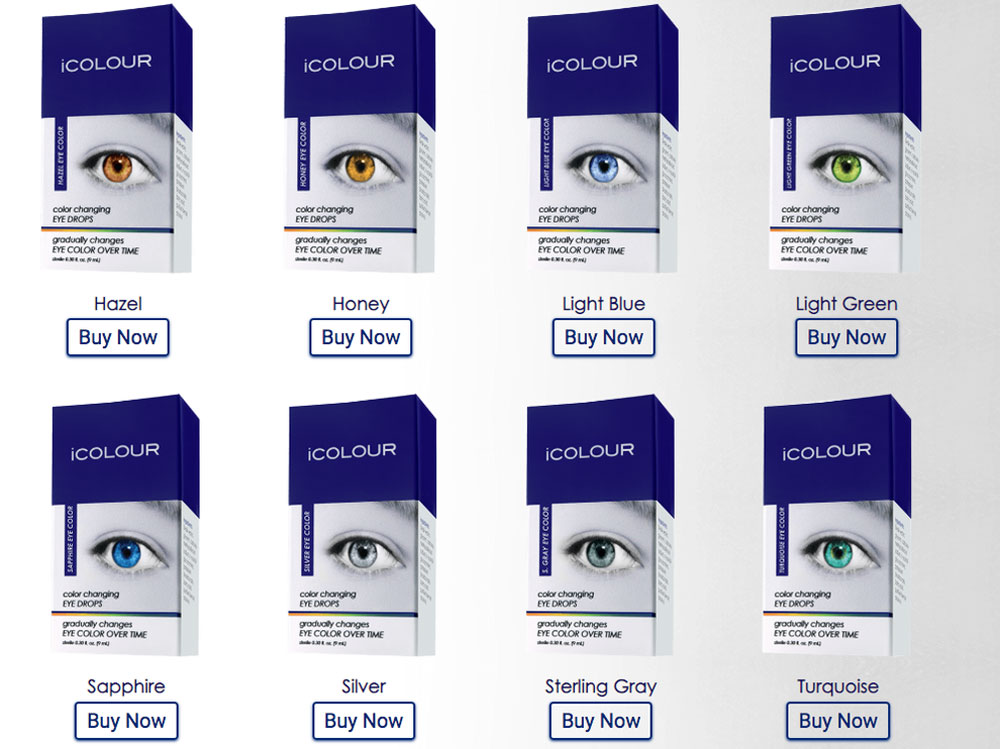
No Limits in Beauty Techniques
As you know, the pupil of our eyes enlarges in low light and constricts in response to bright light.
Moreover, when we focus on a close picture or writing, our pupils become smaller than normal. But you might not know that the iris controls the change in pupil size.
When the iris makes the pupil smaller, its pigments get closer to each other. In contrast, when the iris makes the pupil larger, the pigments spread across the iris surface. This change in the condition of the pigments results in a slight change in the person’s eye color.
Another fact about eye color change is that the eye color in most people darkens with age.
A more interesting fact is that emotions like anger, joy, or affection affect the color of the human eye.
However, you should be aware that an unexplained, significant change in the eye color or the color change in just one eye may be a primary symptom of a systemic or ocular disease. Thus, if you notice such symptoms, you should visit an ophthalmologist immediately.
How can I change my eye color?
This question has been and will be on the minds of many. It is a question that stems from the human’s innate desire for beauty and to look better, and sometimes from their craving for variety.
If you are looking to change your natural eye color, it is good to know that there are various ways to do this, which we’ll discuss below.
Types of eye color change
1. Temporary color change
- Colored contact lens
2. Permanent color change
- Eye drops for changing eye color
- Eye color change using laser
- Artificial iris implantation
- Femto Laser Aesthetic Annular Keratopigmentation (FLAAK)
Temporary eye color change
Colored contact lenses
The most popular way to temporarily change eye color is by using a special type of lens called “colored contact lenses.” If you are willing to change your eye color in this way (again, we emphasize “temporarily”), you should remember to use these lenses under the supervision of an ophthalmologist.
Contact lenses for temporary eye change come in a variety of types as follows:
- Visibility tint lenses: These lenses have a slight tint, and if the user’s eyes are light, they only subtly alter the eye color.
- Semi-transparent or enhancement tint lenses: These are a type of semi-transparent lens. They do not alter eye color significantly but can intensify it or make the eyes look more prominent.
- Opaque lenses: These lenses can change the eye color completely and are available in different colors, including blue, green, purple, brown, gray, and hazel.
Important note:
Using colored contact lenses comes with its own problems and risks. For example, if the lenses are not cleaned or cared for properly, they can lead to ocular infection in some cases.
This point is so important that the US Food and Drug Administration (FDA) has underscored the need for a prescription to use cosmetic lenses. This suggests that all contact lenses (even cosmetic ones) must be prescribed by an ophthalmologist or optometrist.
Permanent eye color change
Before digging deep into this topic, it is important to know that for a permanent eye color change, either the iris pigments must be altered or the iris must be covered with a colored layer. The following methods are available to change eye color:
A. Eye drops for changing eye color
In recent years, some companies have introduced various eye drops to the market, claiming they can alter human eye color.
As suggested in the brochure of these drops, the eye color change does not occur immediately. In turn, the individual has to use these drops for a certain period recommended by the company (generally for at least 160 days, twice a day).
It is important to note that the eye color change by these drops is not permanent. For this reason, many people hesitate to use this method to change their eye color. For instance, one of the largest companies manufacturing these drops has announced that the eye color returns to its original natural color within 18 to 24 months. Therefore, the user should restart using these drops to maintain the color. Thus, it can be concluded that no eye drops are available for permanent eye color change.


b) Laser irradiation on the iris
Another method of changing eye color is the use of lasers. The individual looking to change their eye color sits in front of a device that emits laser beams onto their iris. This procedure is repeated between 4 and 20 sessions. The laser diminishes the iris pigments, and this transformation causes a change in eye color.
Based on the published reports so far, a few people have changed their eye color using this method. It is worth noting that laser eye color change is still in its preliminary stages, and there is a long way to go until it reaches the desired level and receives approval from the regulatory authorities.
A major problem with using lasers for changing eye color is that the resulting color after laser treatment is unpredictable. This means the person’s eye color may turn bluish, greenish, or slightly lighter than the original color.
Nevertheless, another group of researchers and ophthalmologists have a different opinion from these laser manufacturers. They believe that not only laser is ineffective for changing eye color but also carries some risks. They cite various reasons for their opinion. One significant reason is that they think laser application to the iris (for changing eye color) may cause ocular diseases, including glaucoma and even iris melanoma.
Despite having access to this type of laser, ophthalmologists at Noor Eye Hospital do not recommend using this method for permanent eye color change and consider it dangerous.

c. Artificial iris
The use of artificial iris is another method to change eye color, which has its own supporters. In this method, the individual first chooses their eye color of interest. Then, an artificial iris with the desired color is placed over the iris through surgery. This method is over a decade old, and some ophthalmologists at Noor Hospital were the first and only specialists implementing this technique in Iran and the Middle East.
People interested in changing their eye color using artificial iris choose their desired color from a color brochure. Then, the artificial iris with their desired color is ordered, and the American company “BrightOcular” manufactures and delivers it to the Hospital. Eventually, the artificial iris is placed over the individual’s iris through a surgical procedure, changing the color of their eyes to their color of interest.
Advantages
Reversibility is the most significant advantage of changing eye color through artificial iris implantation. This means that an ophthalmologist can return the person’s eyes to their original color by removing the artificial iris. Another benefit of this method is that the individual can choose their exact color of interest, and the final result will be what they want.
Another benefit of this method is the variety in colors and designs of artificial irises. The wide range of colors and designs with unique appearances can make the patients satisfied and happy with the final results of the surgery. In addition, this procedure does not prevent refractive error surgeries (like LASIK), cataract surgery, or other necessary ocular operations.
Complications
An artificial iris is an intraocular implant made of silicon. It is currently utilized in many intraocular lenses, including those used for cataract surgery or vision correction. Silicon materials are safe, non-toxic, and compatible with the human body. Additionally, an artificial iris is designed to last for the patient’s lifespan.
The right patient selection is significant for the surgery’s success and minimizing risks. Patients must undergo a thorough eye examination, and their eye characteristics should be examined using various imaging methods.
However, this procedure poses some risks similar to any other eye surgery. Potential complications of artificial iris implantation include the risk of infection, ocular hypertension, glaucoma, corneal edema, bleeding, loss of endothelial cells, lens opacity, cataracts, pupil ovalization, and photophobia.
It should be noted that the implants can be removed from the eyes should any complications occur.
Conclusion
Most artificial iris implantation surgeries are performed for medical purposes. They are essential and recommended for treating certain diseases that lead to iris loss. However, thousands of people worldwide have successfully changed their iris color permanently using artificial iris for solely cosmetic reasons.
Ophthalmologists at Noor Eye Hospital do not recommend this method for permanent eye color change except in special cases due to the complications of these types of implants.
D. Keratopigmentation
Femto Laser Aesthetic Annular Keratopigmentation (FLAAK) is a surgical technique for permanently changing the eye color for therapeutic and cosmetic purposes. Keratopigmentation, also known as corneal tattoo, has long been used to treat patients affected by corneal opacities. In this technique, the surgeon first creates a precise micro-tunnel in the thickness of the cornea using a Zeiss femtosecond laser (VisuMax 500/800). Then, pigments that are similar to the natural human eye pigments are introduced into the micro-tunnel to change the patient’s eye color into the desired color. For more information, follow this link here.




